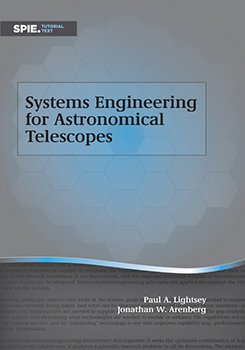
Jonathan Arenberg is the Chief Engineer for Space Science Missions at Northrop Grumman Aerospace Systems in Redondo Beach, CA. He has over 29 years of experience working on astronomical programs such as the Chandra X-ray Observatory, development of the starshade, NASA’s James Webb Space Telescope and other mission concepts. He held several positions on Webb, in technology development, systems design leader, systems engineering manager and finally chief engineer. In addition to his work on astronomical systems, he has contributed to major high-energy and tactical laser systems, laser component engineering, metrology, optical inspection, technology development projects and the development of US national and international standards. He holds Bachelor of Science in physics, a Master of Science and PhD in engineering all from UCLA. A committed member of the scientific community, Dr. Arenberg is a long serving California State Science Fair Judge and is a referee for several journals. He is a fellow of the international optical engineering society, SPIE, for his contributions to astronomical and laser systems. He is the author of over 180 conference presentations, papers and book chapters and holds a dozen European and U.S. patents in a wide variety of areas of technology. Dr. Arenberg is also a short course instructor for systems engineering and has recent book SPIE press based on the class he teaches with his co-author.
This will count as one of your downloads.
You will have access to both the presentation and article (if available).
Modern astronomical observatories are becoming larger and more complex with many components working together to achieve the common goal of gathering useful information for astro-scientists. Successful engineering of these observatories is enabled by following a systems engineering viewpoint of looking at the whole. This viewpoint requires a multidisciplinary breadth and the ability to find a balance among 1) the system user's needs and desires, 2) the manager's funding and schedule constraints, and 3) the capabilities and ambitions of the engineering specialists who develop and build the system. The system engineer is sometimes described as the person on the program who should know the partial derivative of every parameter of the system with respect to every other parameter. This course introduces the concepts and models that are used to evolve a system from an abstract vision to the final validated and verified operational system. Examples are given that provide insight into the variety of engineering disciplines and typical subsystems found in observatories for optical astronomy observatories (X-ray through IR).
This probabilistic methodology of performance budgeting should be a tool in every engineer’s tool kit as it is fundamental to understanding how system design impacts the probability of successful. This course explains basic principles for the use of probability analysis applied to systems engineering problems. Specific attention is given to the central problem of performance budgeting. A primary goal of the course is explaining the logic, construction and application of performance and error budgeting. Examples are taken from various problems in systems engineering of astronomical and laser systems. This course will be of benefit to anyone who wants to answer the question, “what are the chances of success of my project?” and “how can I change the design maximize the probability of success?”, “how do I allocate tolerances?”, “how do I explain the uncertainties in performance?”
A performance budget is fundamental to understanding the likely outcome of a design or measurement process. The budget also gives insight into the distribution of likely performance and how it is affected by design. Because of the clear link between performance and design, the performance or error budget is the central tool in systems engineering, design and measurement. The ability to construct such a budget should be in every scientist’s and engineer’s tool kit regardless if the system is a simple measurement, component or something vastly more complex. This course explains the basic principles of the construction of a rigorous performance budget and understanding the distribution of outcomes. The problem of allocation of performance among components or subsystems is also introduced and explained. Examples of performance budgets and allocations are taken from various problems in the systems engineering of astronomical and laser systems are used to illustrate application of these techniques. This course will be of benefit, scientists, engineers and managers who want to answer the questions, “what are the chances of success of my project?” and “how can I maximize the probability of success?”
View contact details
No SPIE Account? Create one


